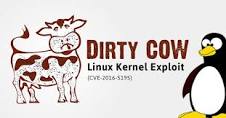With the recent public release of Fedora 26, we in the Respins SIG, have begun testing of Fedora 26 builds. These test builds include:
Cinnamon (CINN)
KDE (KDE)
LXDE (LXDE)
LXQT (LXQT) — New addition with Fedora 26, additional/heavy testing requested.
MATE (MATE)
Sugar On A Stick (SOAS) – Educational spin, tailored to youth and those with cognitive problems, (i.e. rehab after a stroke)
Gnome Workstation (WORK)
XFCE (XFCE)
Please grab the ISOs from [ http://de.fspin.org/Testing/ ] or [ http://tx.fspin.org/Testing/ ]. If you happen to see multiple runs there unless otherwise asked to, test the newest date run.
It is planned to have any build issues worked out by mid-August and by the start of Fall term having Official 26 Respins replace the present 25 builds.
For any questions, feel free to join us on IRC, [ ircs://irc.chat.freenode.net/#fedora-respins ].






You must be logged in to post a comment.